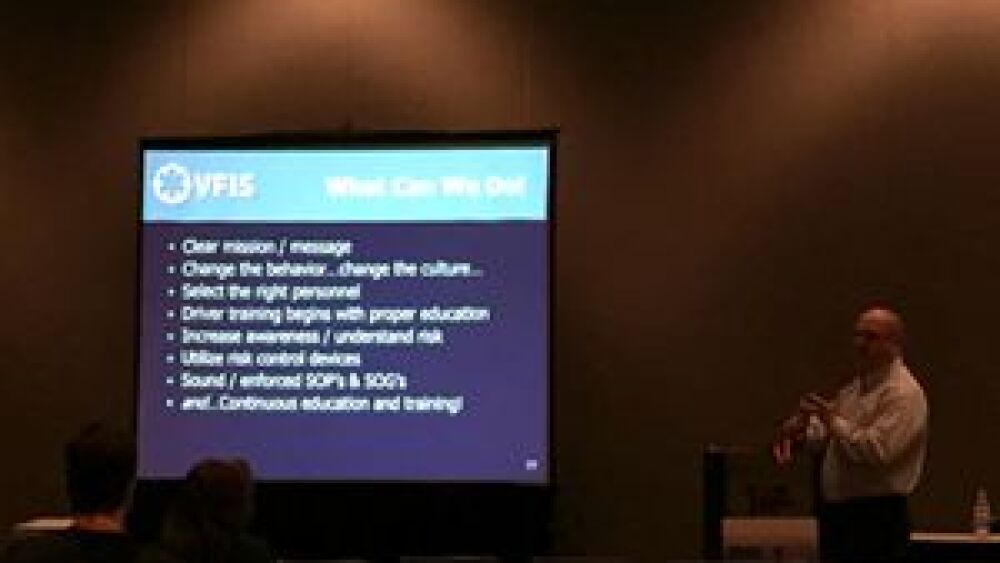LAS VEGAS — Driving to and from emergency calls and other driving-related activities like parking are some of the top risks in EMS and fire. David Bradley, VFIS educator and paramedic from Pennsylvania, presented at EMS World Expo a targeted initiative to heighten awareness of intersection safety with the goal of reducing the frequency and severity of intersection losses.
Bradley opened the presentation with statistics about line of duty deaths in fire and EMS. Twenty-five percent of firefighter line-of-duty deaths happen while responding to and from alarms. Seventy-four percent of EMS fatalities are transportation related.
A series of collision case studies, many with dashcam videos, were used to question response methods, seatbelt use, driver training, annual motor vehicle record checks and driver selection.
Memorable quotes
“Everything related to driving – responding, backing, parking – is one of our largest risks.”
“Every time you and your colleagues don’t wear a seatbelt in the ambulance it is a near miss.”
“Intersections are not our friend. We need to handle them as safely as possible.”
David Bradley, director of EMS Programs, VFIS
Key takeaways
- Near miss is an unplanned event that did not result in injury, illness, or damage but had the potential to do so.
- Address the little things, like wearing a seatbelt, and avoid the big things, like ejection from the ambulance.
- Focus on driving during response and patient transport by applying the sterile cockpit principle which limits conversation to only critical communications.
- At controlled intersections, emergency drivers should not rely on warning devices to clear traffic, scan the intersection for possible hazards and driver options, begin to slow down before reaching the intersection, cover the brake pedal while continuing to scan and beginning to slow down, and change the siren cadence at least 200 feet from the intersection.
- Scan for possible passing options, avoid using the opposing lane if at all possible and consider using the lane of least resistance that is consistent with intended direction of travel.
More information on intersection practices is available in this VFIS risk communique.



